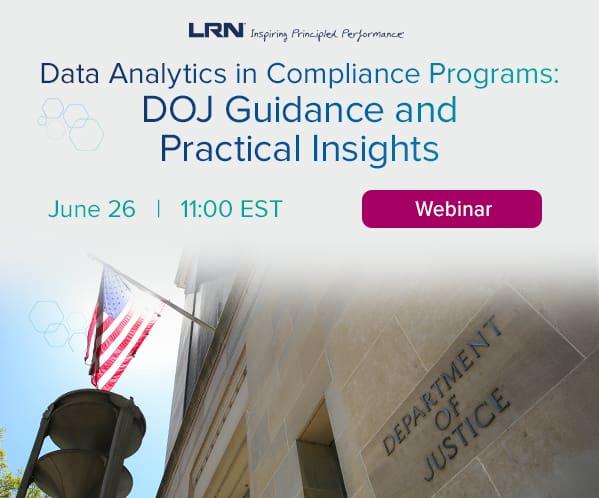Key Challenges and Benefits of AI
Machine learning and artificial intelligence have become buzzwords in the financial services industry. Daniel Fernandez helps to break down the difference between the two terms and explains how these technologies are being used by compliance departments today. By delving into how these technologies work, Daniel sheds light on the issues they can help to solve, the challenges facing their increased adoption and what financial institutions should be doing right now to take advantage.
Like many industry buzzwords, artificial intelligence (AI) has become a hot topic that RegTech technologists often write or speak about. But the reality is this: AI has become an overloaded and misused term, often mistaken for machine learning (ML). This post aims to clarify the difference between the two, explain some of the complexities of implementing these solutions today and highlight how ML can immediately add value in financial compliance applications.
In simple terms, artificial intelligence enables computer systems to perform tasks that require human intelligence; intelligence is the key word. In contrast, machine learning refers to a computer system that has the ability to learn how to do specific tasks and in some instances can use past data to make future decisions or predictions without being explicitly “told” (programmed) how to do so. Machine learning is a key building block of artificial intelligence.
Contextualizing Machine Learning
AI and ML are often confused because the terms are used interchangeably. But they are not the same. Today, ML is used in many narrow compliance applications, including risk detection models and other event classification use cases. A narrow ML application, however, does not constitute AI in the context of compliance.
That said, a combination of systems and programs (based on ML) could constitute an artificially intelligent system, although no such systems truly exist in the compliance realm today.
Most artificially intelligent systems use a combination of machine learning applications and techniques along with rule-based systems (to be fully interactive). For example, phone-based smart assistant applications (such as Google Now, Siri, Cortana and Alexa) use a set of application components which are mostly powered by machine learning. These include: language identification, translations, transcriptions, natural language understanding, etc. In these interactions, you can perform tasks, such as booking a cab, where the following steps are performed behind the scenes:
- Understand your command of requesting a car service and your destination;
- Detect your location and determine your optimal pick-up location;
- Reach a nearby driver and agree with this driver on taking this trip;
- Communicate back to you with an estimated fare for final confirmation.
Interacting with a smart assistant in this manner can be considered AI because the smart assistant fully replaces a human (the taxi dispatcher), who would normally perform these tasks. Thus, human interaction is bypassed altogether.
Why Compliance Needs Hybrid Intelligence
While taxi dispatchers can be replaced by AI, the same cannot be said for compliance analysts. And this is a good thing, because while smart machines and complex algorithms can process a lot of data to automate and perform some human tasks faster, there are limitations. For example, the current machine-learning models and advanced statistical techniques can process far more messages, trades and records than humans can, but humans are still needed to review, apply judgment and make decisions about what constitutes or does not constitute compliant communications. Why?
First, such decisions involve substantial operational and financial risk, as well as potential severe legal consequences and reputational damage. Secondly, true AI systems need to learn what is good (compliant) and bad (noncompliant) behavior, and there simply aren’t enough instances of noncompliant communications in a firm’s data for an AI machine to learn this distinction and make reliable decisions.
So when it comes to financial communications compliance, while technology can eliminate the time-consuming tasks entailing large data analysis, it is no substitute for the decision-making abilities of the compliance analyst, at least not today.
The Data Integration/Aggregation Challenge in Machine-Learning Technologies
Adoption of ML technologies is accelerating across many industries (financial services firms included), thanks in large part to a renewed focus on applied problems and sharing of research findings. Still, one of the biggest challenges of ML remains unsolved. Machine learning relies on data.
Most advanced analytics projects devote a large portion of time to identifying and curating the necessary data to feed advanced algorithms. But are the analytics engines themselves flexible enough to handle all of these data inputs? In some cases, the answer is “no,” as some ML systems are constrained to accepting only certain types of data in certain types of formats.
This exact concern was highlighted in a recent report by Jeffries, a global investment banking firm. The research report focused on issues related to IBM Watson. It highlighted an example of a health sciences project that required a significant amount of services and effort to integrate data sources from different systems and did not produce the desired results.
According to the Jeffries report, for example, MD Anderson has already spent over $60 million dollars on a Watson project and stated that “IBM is very ‘picky’ about the data it feeds Watson.” The project has since been halted because of the extensive integration that would have been required to make it work with MD Anderson’s systems.
As part of their normal course of business, financial Institutions already have to archive and analyze large amounts of data. By implication, ML platforms that rely on restrictive data inputs only make this problem worse. Financial institutions would need to store separate data in different formats in order to support advanced analytics models.
In communications compliance, this becomes a much bigger problem due to the large variety of structured and unstructured data sources. Financial firms need to weigh the pros and cons – should I invest in a one-off ML project requiring custom integration, or should I layer ML on top of my existing surveillance solution? A lot of work already goes into making data useable for the surveillance process; why not leverage the data your organization has already organized and curated for ML as well?
Either way, the expectation needs to be that ML is not intended to be self-sufficient. It needs to work hand-in-hand with a human compliance analyst, at least for today.
Fit for use is another challenge these projects face: the issue of the usability of the data was also highlighted in the MD Anderson/Watson audit. The report concluded that the Watson system was “not ready for human investigational or clinical use.”
Just having an ML system spit out results is not enough. You have to be able to integrate these results into the day-to-day supervision and investigative workflow of your compliance analysts in a way that’s intuitive and contextual. This ensures that your ML is not just creating “more noise,” but instead providing useful information for decision-making.
The Expanding Role of Machine Learning In Compliance
In today’s financial regulatory environment, numbers alone are not useful to compliance analysts. Consider, for example, under regulations such as MAR and MiFID II (which will soon go into effect), it’s no longer sufficient to just monitor for actual fraudulent trading practices; firms also need to monitor communications for “intent to commit market abuse” throughout a trade or transaction life cycle. This necessitates obtaining additional context surrounding monitored users and their respective activities. This might include behavior anomalies, relationship discrepancies or other fluctuations in communications or trade data.
The expectation for such analysis is also being driven by regulators such as the SEC (Securities Exchange Commission), which has already started to incorporate these techniques into their daily compliance processes as well. Scott W. Bauguess (Acting Director and Acting Chief Economist DERA from the SEC) discussed this in a presentation at the OpRisk North America (in June 2017) when he said that the SEC uses “unsupervised algorithms to detect patterns and anomalies in the data, using nothing but the data.”
When it comes to financial communications compliance, machine-learning technologies can truly improve the compliance process, but only if they fit into your firm’s current workflow. There’s no such thing as true AI in financial compliance (at least not yet), but ML can enhance your compliance team’s view of monitored users, help to detect financial communications compliance issues and – if implemented and applied correctly – facilitate analyst decision-making.



 Daniel Fernandez is the Analytics Product Manager for NICE Financial Communications Compliance. Currently working towards driving cutting-edge analytics solutions in the financial services compliance space, Dan has extensive experience in agile product development in startup environments and large enterprises, as well as experience with large data warehouse deployments in financial services for market data, trading, pricing and risk data capture. While in the finance industry, he worked at a major investment bank focused on a proprietary data capture and analytics framework for both real-time and historical data use cases. With a background in both finance and management information systems, he possesses deep technical understanding, as well as an understanding of business drivers for strategic data applications.
Daniel Fernandez is the Analytics Product Manager for NICE Financial Communications Compliance. Currently working towards driving cutting-edge analytics solutions in the financial services compliance space, Dan has extensive experience in agile product development in startup environments and large enterprises, as well as experience with large data warehouse deployments in financial services for market data, trading, pricing and risk data capture. While in the finance industry, he worked at a major investment bank focused on a proprietary data capture and analytics framework for both real-time and historical data use cases. With a background in both finance and management information systems, he possesses deep technical understanding, as well as an understanding of business drivers for strategic data applications. 







